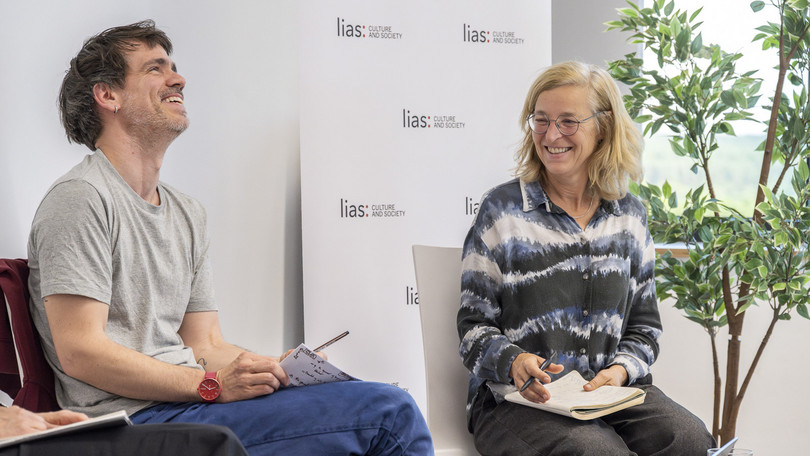Analysis and Overcoming Alienation
LIAS Workshop „Disalienation and Praxis – Experiments in Institutional Critique“
2025-06-30
11 June 2025. The interdisciplinary workshop “Disalienation and Praxis – Experiments in Institutional Critique” addressed the question of how alienation in art, psychiatry, and institutions can be not only analysed but also overcome in practice. Four presentations discussed historical and theoretical approaches to “disalienation” – that is, the active processing and traversal of structures of alienation.
In the first contribution, “Fantasies of Disalienation,” LIAS alumna Kerstin Stakemeier (Academy of Fine Arts, Nuremberg) pointed out that the concept of disalienation is largely absent from Marxist aesthetics (for example, in the work of Peter Gorsen). Art appears here as “loot” in a property relationship and therefore as fundamentally alienated. Drawing on Jacques Lacan’s early theory of madness as a structural component of subjectivity and Jean Laplanche’s interpretation of Sigmund Freud’s seduction theory, disalienation was understood not as a return to an authentic nature, but as an active engagement with alienating fantasies. Gender was recognized as a central site of alienation – criticism of binary gender models emphasized that the binary itself is a form of structural alienation.
LIAS Senior Fellow Nancy Luxon spoke about “Disalienation by Design” and analysed Frantz Fanon’s psychiatric clinics as transitional institutions between colonial rule and revolutionary utopia. The metaphor of the “leaky container” stood for an open, changeable institution that enables new social orders. Here, material aspects of psychiatry – such as architecture, nutrition, and the role of nursing staff, and women in particular – were understood as part of an expanded therapeutic space. Disalienation here did not mean reintegration into existing conditions, but rather the radical repurposing of institutional infrastructures.
The third contribution, “Geopsychiatry and Institutional Praxis” by Elena Vogman (Institute for Cultural Inquiry Berlin), referred to the practice at the Saint-Alban psychiatric clinic
(Tosquelles, Fanon, and Guattari). Vogman understands geopsychiatry as a media- and environment-related approach in which films, drawings, and other forms of expression were used to change collective perceptions and temporal structures. The clinic did not function as an isolated institution, but as a social hub – a bridge between inner and social reality. The collective experience, based on transversality, transference, and patient participation, proved particularly effective in therapy.
In his contribution, “Patient Agency in Decolonial Psychiatry,” Romain Tiquet (Centre Marc Bloch, Berlin) examined the ambivalent role of patients in postcolonial psychiatry based on a case file from the Fann Clinic in Dakar (directed by Henri Collomb). The example of the adolescent Mustafa showed that patients appear simultaneously as actors, symptoms of social contradictions, and possible objects of clinical attributions. Far from the desired “liberation of speech,” the articulations of patients in the clinic often remainedoverdetermined by cultural and institutional frameworks. Overall, the workshop showed that disalienation cannot be understood as a return to an authentic self or as a purely theoretical concept. Rather, it emerged as a practical, oftenexperimental process that subverts, shifts, or reshapes existing power and institutionalstructures. Whether in art, clinical practice, or theory, disalienation calls for a conscious examination of the conditions of the subject and the possibilities for change.



